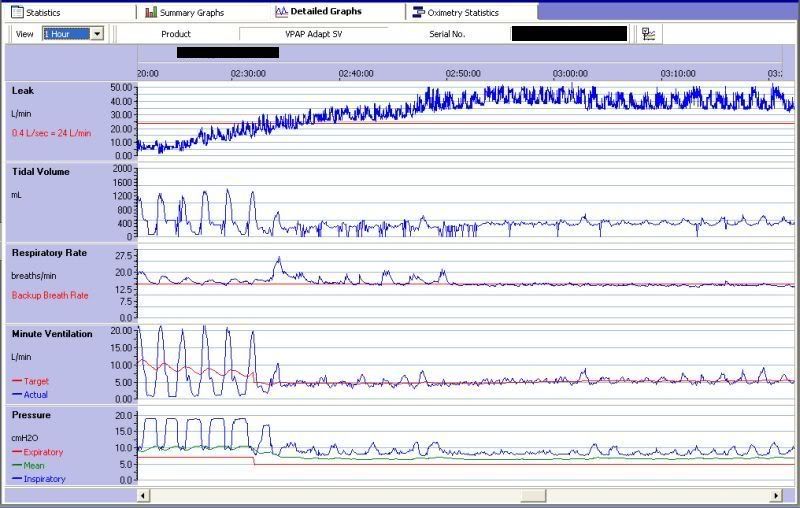ozij wrote:Despite Banned's statement that only the "Quattro" is good for the SV,
Resmed Adapt SV patient's manualstates that the following masks can be used on the machine:
Option in Settings menu Use setting with:
Vista ------> Vista™
Ultra -------> Ultra Mirage™
Full Face -------> Mirage™ Full Face Mask Series II,Ultra Mirage™ Full Face Mask
Activa ------- > Activa™
And you can add the Liberty to that as well.
dsm wrote:the Bipap SV only ventilates to volume. I believe this is because it can't safely do rate & volume & that is the point I am making.
No it doesn’t, the Respironics BiPAP AutoSV is flow-based.
ozij wrote:Oh, and I agree that for some people, it's a nice feature to have a machine that subtracts the fixed leak from the other leak. I just don't think that, by and of itself, can hint at a more accurate algorithm.
I absolutely agree there, o.
Lubman wrote:the assist sv algorithm isn't tolerant to accidental leaks.
Lubman, I think I would qualify that by saying that AdaptSV (as well as most of the machines with some sort of a pressure algorithm) don't like sudden or irregular leaks, but relatively constant leaks can usually be well compensated for, and the actual quantity is less of a factor than one might think.
To demonstrate this point, this is a case of
Inadvertent Increasing Leak During Adapt SV Titration. Leak rate rose to 40 LPM, yet clearly the patient was doing quite well. CSR has been corrected as evidenced by the disappearance of the huge swings in minute ventilation at the beginning. BTW, a drop in EEP is arguably the trigger for successful attack on the CSR:

But the leak increase is almost uncanny in its behavior:

I don't
know that this was an actual mask leak, I mean could there be a quirky set of circumstances where the algorithm gets a little screwy? Yet, given the timeframe (30 minutes) this seems unlikely (the algorithm implies that even sudden large leaks, like 60 L/min, will be compensated for within 30 seconds).
A source of error in calculation can occur when the machine has trouble identifying the beginning and ending of inhalation and exhalation. In this limited data window, tidal volume measurements appear to be a little askew during that period of gradual increase in reported leak rate, and this might infer some problems defining respiratory cycles.
More likely, probably just the usual cause of mask leaks, perhaps the gradual change was something like straps were becoming more compliant as they warmed/stretched, etc.
The point, however, is that very gradually appearing leaks, or constant leaks, may be well-tolerated by algorithms.
Now, this does not mean to say, "Aha! SAG said it's OK to drill a half inch hole in my mask to get MegaEPR and everything will work peachy!"
Unintentional leaks over a certain amount (let's say 24 L/min since we're talking about ResMed technology) imply that the mask seal has become unpredictable (maybe there was some 0 leaks, then some 60 LPM, etc.), and that's what really messes everything up.
SAG















